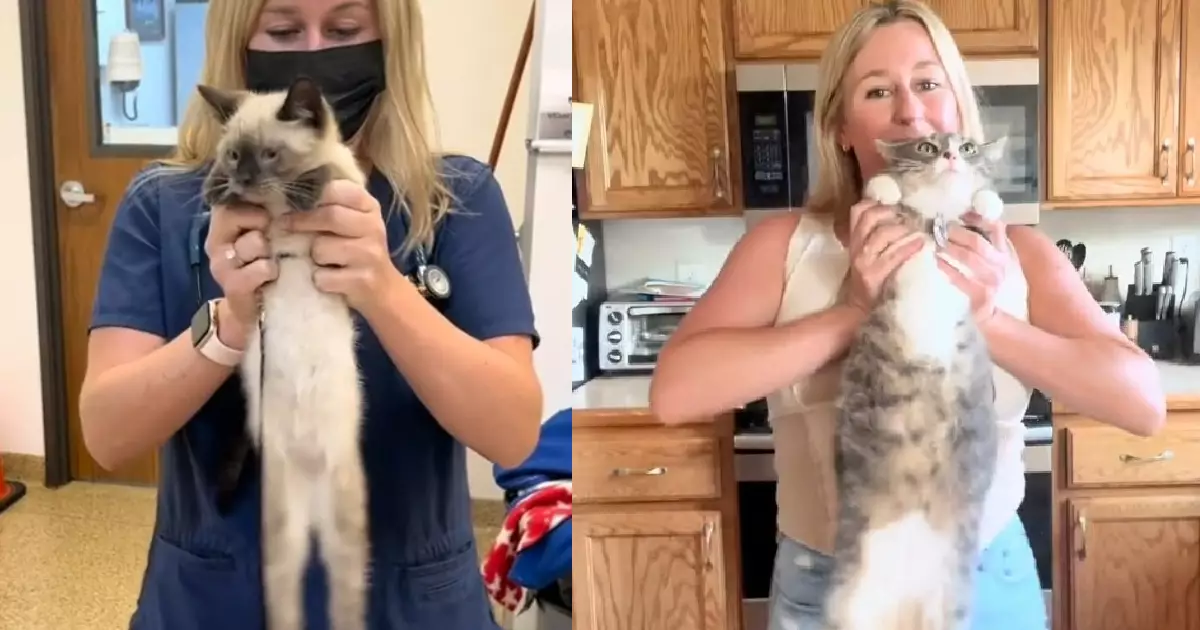For generations, pet owners have relied on anecdotal tales—old wives’ stories—to understand their animals better. Among these, the “dangle test” has garnered renewed attention thanks to a viral TikTok video by Kansas veterinarian Dr. Tori Given. This simple, seemingly playful experiment involves gently dangling a kitten or puppy to gauge their temperament based on their reaction. While its popularity is undeniable, it raises critical questions about the scientific validity of such methods and whether age-old folk wisdom can truly guide modern pet parenting.
Unlike formal behavioral assessments conducted by animal behaviorists, the dangle test appears to be more of a social media trend driven by curiosity and humor. Yet, its widespread adoption reveals a deeper human desire to decode pet personalities instinctively. It highlights our tendency to equate a pet’s immediate reactions with their innate temperament — a notion both alluring and potentially misleading. The challenge here lies in distinguishing entertainment from empirical insight, especially given the variability of animal responses and the risk of oversimplification.
Assessing the Scientific Merits: Is the Dangle Test Reliable?
The core issue with the dangle test hinges on its scientific foundation. Is a pet’s reaction when dangled a reliable indicator of future behavior? Current understanding in veterinary behavioral science suggests not. Animal temperament is a complex trait influenced by genetics, environment, socialization, and individual experiences. A single reaction to a temporary, potentially stressful situation cannot definitively predict a pet’s personality or suitability for specific households.
From a scientific perspective, behavior assessments require comprehensive observation over time, not isolated moments of discomfort or curiosity. Relying on such a simplistic test risks mischaracterizing a pet’s temperament, leading to misguided expectations or even unwarranted judgments about their suitability as companions. For example, a kitten that panics during the dangle might simply be inexperienced or frightened, not inherently aggressive or anxious. Conversely, a calm reaction does not guarantee that a pet will behave the same way in all circumstances.
Furthermore, the practice raises ethical concerns about subjecting animals to stressful or unnatural experiences for entertainment or curiosity’s sake. While most animals quickly recover from such brief encounters, normalizing pet tests rooted in discomfort may unintentionally encourage neglecting comprehensive behavioral evaluations or proper socialization methods.
The Role of Human Interpretation and Cultural Context
One of the most intriguing aspects of the dangle test is how it reflects human perceptions of animal behavior. The responses from pet owners range from amused, proud revelations to humorous acknowledgments of failed attempts. These narratives expose our desire to interpret animal reactions through anthropomorphic lenses—projecting human emotions and intentions onto pets to create engaging stories.
Cultural context also influences how such tests are received. In some societies, playful experiments like the dangle test are viewed as harmless fun, fostering a sense of community through shared experiences. Others might see it as frivolous or potentially harmful. Ultimately, the appeal lies in human curiosity about animal personalities and the hope that simple tests could unlock a deeper understanding.
Yet, this reliance on informal methods underscores a broader trend: a hunger for quick insights in a rapidly evolving world. As pet owners become more invested in their animals’ wellbeing, they seek easy ways to connect, understand, and predict behavior. The danger, however, is that these methods can lead to misconceptions—falsely attributing personality traits based on limited, subjective observations.
Reimagining Responsible Pet Parenting in the Age of Viral Trends
Instead of relying on unreliable tests, pet parents should prioritize scientifically supported approaches to understanding their animals. Proper observation over time, consultation with veterinary professionals, and positive reinforcement remain the pillars of responsible pet care. The viral popularity of the dangle test serves as a reminder that humor and curiosity are invaluable, but they shouldn’t replace evidence-based practices.
Ultimately, the charm of these viral experiments lies in their ability to entertain and foster community. However, they should be viewed through a critical lens—a reminder that animals are complex beings whose true temperaments require patience, training, and understanding. While the allure of quick answers is tempting, the most accurate insights often come from a compassionate, informed approach rooted in science rather than folklore or social media trends.

